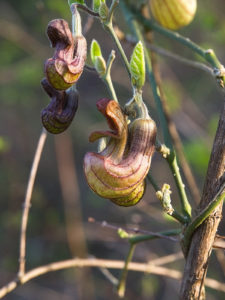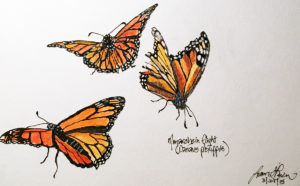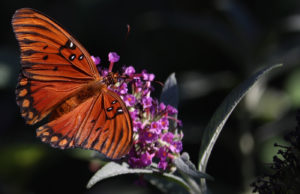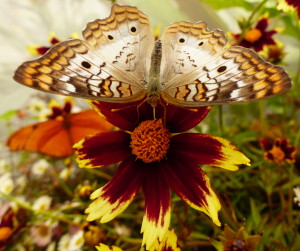Animal habits, or behavior, can indeed change due to the presence of nonnative plants. Two examples come to mind. Fennel is a plant native to the Mediterranean region of Europe which became an invasive weed in the Bay Area subsequent to its introduction as a food plant. One of our native swallowtail butterflies, Papilio zelicaon, has come to depend heavily on laying her eggs on fennel. Originally, the butterfly’s favored larval food plants were angelica and hog-fennel, native members of the parsley family, to which fennel belongs. But many local populations of these plants have been eliminated due to habitat loss. The concern now is that if fennel is eliminated in an effort to restore native habitats, the butterfly may face extinction.
Sometimes, the presence of nonnative plants can alter behavior in ways we might view as positive. Biologists at the Point Reyes Bird Observatory have strong anecdotal evidence that the overwintering range of the Anna’s hummingbird has expanded northward to the Bay Area with the introduction of nonnative plants. Many of these, including the ubiquitous blue gum eucalyptus, flower in winter (when many native plants are semidormant), giving the hummingbirds a ready and abundant nectar source.
“Characteristics” are an entirely different matter. Physical attributes are determined in large part by an animalís genetic code or DNA. This code is not directly affected by the presence of exotic plants; it is fixed in that particular organism for life. However, it is quite possible that the displacement of native by exotic flowers could affect reproductive behavior in the species that feed on them. For instance, flowers that bloom earlier might favor individuals of a species who mature slightly earlier. This trait (and any others associated with it in the animal’s DNA) would then be selected for preferentially, as it ensures continuing greater reproductive success. Over time, this could result in changed physical characteristics. I don’t know of any local examples of this, but a study in England is illustrative. There, a certain moth had a nearly white coloration that blended in with the bark of trees it rested on, making it nearly invisible to bird predators. But as pollution increased, depositing a sooty layer on tree bark, the moths that survived were selected for darker coloration. Note that such change can occur only if there is already enough variation in the moths’ genetic code.
Of course, it’s best to garden with native plants that favor our native fauna, including the pollinating insects and birds that are part of our natural heritage.




